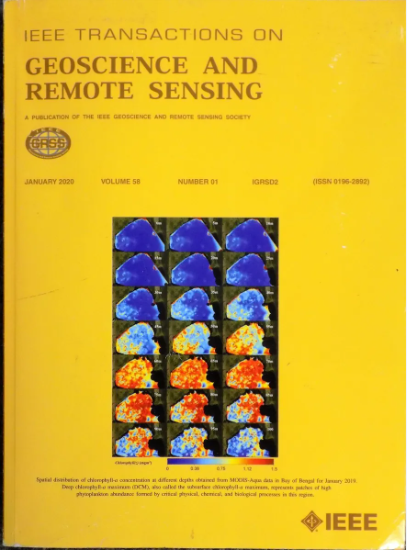Fast Large-Scale Hyperspectral Image Denoising via Noniterative Low-Rank Subspace Representation
IF 7.5
1区 地球科学
Q1 ENGINEERING, ELECTRICAL & ELECTRONIC
IEEE Transactions on Geoscience and Remote Sensing
Pub Date : 2024-09-11
DOI:10.1109/TGRS.2024.3458395
引用次数: 0
Abstract
Denoising of hyperspectral image (HSI) is challenging, especially when dealing with large-scale data. Model-based methods show promise in HSI denoising due to their good generalization, but they suffer from computational complexity due to complex priors [like nonlocal self-similarity (NSS)] and iterations, resulting in low efficiency for large-scale HSI processing. To address these challenges, we propose a fast large-scale HSI denoising (FallHyDe) method based on noniterative low-rank (LR) subspace representation to enjoy high denoising efficiency, effectiveness, and flexibility simultaneously. By leveraging the global spectral property of HSI, FallHyDe efficiently estimates spectral subspace and spatial representation coefficients (SRCs) from the observed noisy HSI, reducing computation complexity caused by the high spectral dimension during processing. In addition, we innovatively explore the presence of high signal-to-noise ratio bands (HSNRBs) in real HSI, enabling fast SRC estimation through a least squares problem without relying on complex priors and iterations. FallHyDe requires neither iteration nor parameter tuning, enabling our method to process large-scale HSI denoising quickly and flexibly. Experimental results on both simulated and real HSI datasets demonstrate that our proposed method not only achieves competitive results in quality but also speeds up the restoration by more than ten times than the representative fast HSI denoising methods. The code is available at通过非迭代低兰克子空间表示实现快速大规模高光谱图像去噪
高光谱图像(HSI)的去噪具有挑战性,尤其是在处理大规模数据时。基于模型的方法具有良好的泛化能力,因此在高光谱图像去噪方面大有可为,但由于复杂的前验(如非局部自相似性(NSS))和迭代,这些方法的计算复杂度较高,导致处理大规模高光谱图像的效率较低。为了应对这些挑战,我们提出了一种基于非迭代低阶(LR)子空间表示的快速大规模 HSI 去噪(FallHyDe)方法,可同时获得较高的去噪效率、有效性和灵活性。利用 HSI 的全局光谱特性,FallHyDe 可以从观测到的噪声 HSI 中高效估计光谱子空间和空间表示系数(SRC),从而降低处理过程中因光谱维度过高而导致的计算复杂度。此外,我们还创新性地探索了真实 HSI 中存在的高信噪比频带(HSNRB),通过最小二乘法问题实现了快速 SRC 估计,而无需依赖复杂的先验和迭代。FallHyDe 既不需要迭代,也不需要调整参数,使我们的方法能够快速灵活地处理大规模 HSI 去噪。在模拟和真实人脸图像数据集上的实验结果表明,我们提出的方法不仅在质量上取得了有竞争力的结果,而且比具有代表性的快速人脸图像去噪方法的修复速度快十倍以上。代码见 https://chenyong1993.github.io/yongchen.github.io/。
本文章由计算机程序翻译,如有差异,请以英文原文为准。
求助全文
约1分钟内获得全文
求助全文
来源期刊

IEEE Transactions on Geoscience and Remote Sensing
工程技术-地球化学与地球物理
CiteScore
11.50
自引率
28.00%
发文量
1912
审稿时长
4.0 months
期刊介绍:
IEEE Transactions on Geoscience and Remote Sensing (TGRS) is a monthly publication that focuses on the theory, concepts, and techniques of science and engineering as applied to sensing the land, oceans, atmosphere, and space; and the processing, interpretation, and dissemination of this information.
 求助内容:
求助内容: 应助结果提醒方式:
应助结果提醒方式:


